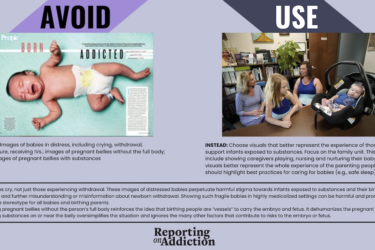
In most states, care for those with behavioral health problems is so poor that the nation’s prisons have become the default treatment centers for many of the most vulnerable mental health patients. As Congress wrestles with plans to cut funding for Medicaid, many observers are calling for more coverage.
For an example of a mental health system that relies on state prisons, see the work of Taylor Knopf, a reporter for North Carolina Health News. In the spring of 2015, Knopf was working for the Raleigh News & Observer when an editor asked her to write a news brief about an effort to improve the state’s use of solitary confinement. Seeing an opportunity, Knopf made a few calls and did more than write a brief: Over the next year, she turned that assignment into a two-part series on how the prison system used solitary confinement to discipline inmates for even minor infractions.
In a new “How I Did It” article, Knopf writes about the series and how her reporting focused on one inmate’s struggle to adjust to life outside of prison after being held in solitary confinement for almost three years.

In 2015, Knopf reported that North Carolina released 21,451 inmates, almost 10 percent of whom had a mental illness, she reported. “Because of a shortage of community mental health resources, the state’s prisons have become a major provider of mental health care,” she wrote. Of those 21,451 prisoners, 941 were released directly from solitary confinement.
The News & Observer published Part 1 of the series, “In solitary, with mental illness,” on May 28, 2016. Part 2, “Searching for stability,” was published on May 30.
In her reporting, Knopf focused on the challenges former inmate Devon Davis faced after his release from the Maury Correctional Institution in Hookerton. “The following months were filled with family drama, personal challenges and the expected problems of a young man not prepared to get by on his own,” the newspaper’s editors wrote about the series. “All records cited in the story came from court files or from prison records obtained by The N&O with Davis’ consent.”
In the first installment of the series, Knopf wrote, “Davis was one of more than 2,000 North Carolina inmates released last year after being imprisoned with a mental illness. He was one of hundreds released directly from solitary confinement within a state prison.”
In solitary, prisoners’ cells are little bigger than a parking space. On the day of his release, Sept. 29, 2015, prison officials dropped Davis at a relative’s home in Knightdale after giving him $45 and one month’s supply of his mental health medications. “They walked him to the door and drove away,” Knopf wrote. Davis had spent almost his entire prison sentence in solitary. Needless to say, he was unprepared for life on the outside, she explained.
Read more about what she learned reporting this story.







